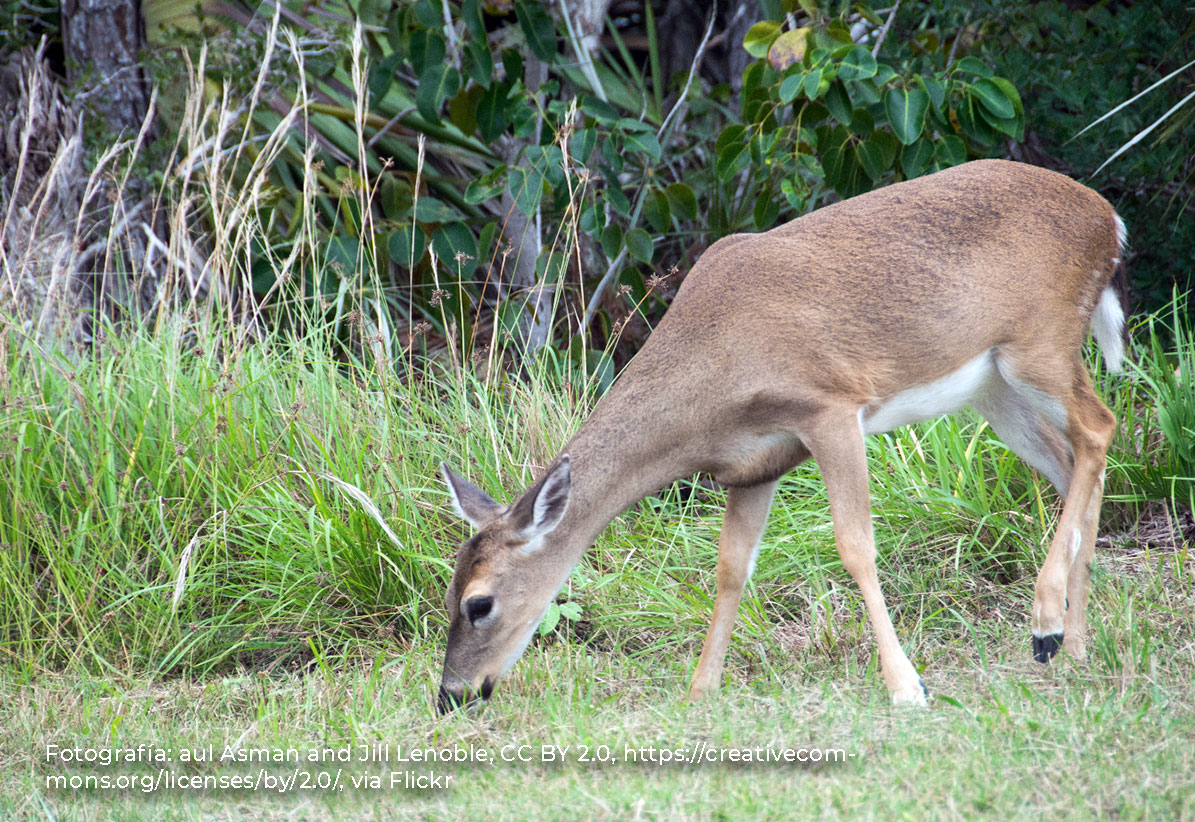
White-Tailed Deer
Learn with Manuel Lara about some of the species that use “wildlife crossing”, designed structures that allow animals to cross barriers made by humans
DESCRIPTION
Their dorsal coloration differs locally, seasonally, and among subspecies; however, in general it is grayer in the winter and reddish in the summer. They have white fur in a band behind the nose, in circles around the eyes, inside the ears, over the chin and throat, on the upper insides of the legs and beneath the tail.
HABITAT
From Canada to Bolivia, in a wide variety of terrestrial habitats, from big woods to deep sawgrass and hammock swamps. They also inhabit farmlands, scrubby areas and desolate areas of the west such as the cactus and thorny brush deserts of southern Texas and northern Mexico.
WILDLIFE CROSSINGS
A wide range of underpass and overpass designs have been implemented and are used by ungulates (including white-tailed deer), generally they prefer overpasses or large open underpasses. Ungulates have been shown to prefer crossings that appear more open, because it is in their nature to avoid confining spaces where a means of escape does not appear to be clear, thus they tend to prefer overpasses. When the option of an overpass is not available, deer appear to prefer larger and more open underpasses.
REFERENCES:
Dewey, Tanya, & Animal Diversity Web. “Odocoileus virginianus, white-tailed deer”. Animal Diversity Web. https://animaldiversity.org/accounts/Odocoileus_virginianus/ (Consultado el 03-03-2022)
InTrans. “Wildlife Crossings”. Institute for Transportation. Iowa State University. https://intrans.iastate.edu/app/uploads/sites/10/2018/10/CMToolboxCrossings.pdf (Consultado el 03-03-2022)











